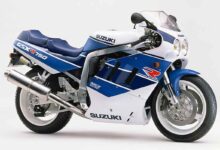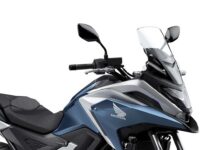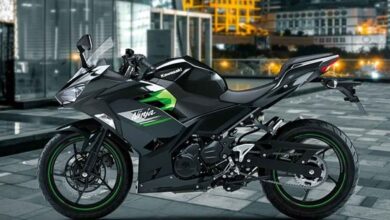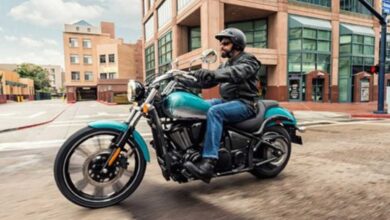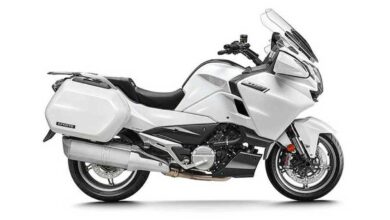Vespa 98: Breakthrough design and legend of Vespa
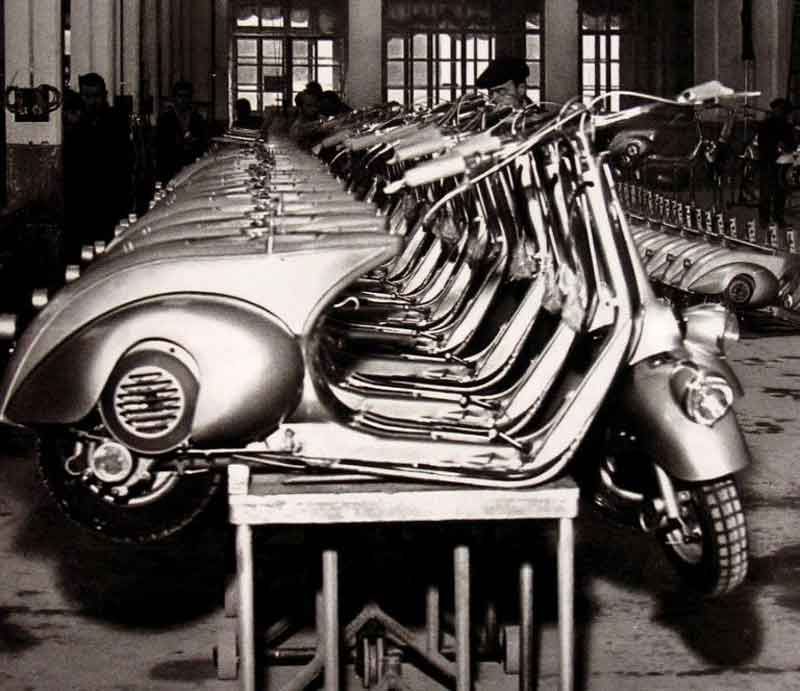
Contents
About Vespa 98
Vespa 98 is a legendary motorcycle model of the Vespa brand, first launched in 1946 in Italy. With its sophisticated design and powerful engine, the Vespa 98 has created a fever in the motorcycle industry and has become a symbol of style and class.
History of Vespa 98
At the time after World War II, Italian industry was recovering from heavy losses. Piaggio Company, an aircraft manufacturer, has decided to shift production to motorcycles to meet people’s mobility needs.
Vespa was born under the leadership of Enrico Piaggio, son of the company’s founder. He tasked designer Corradino D’Ascanio with the task of creating a motorcycle that was unique, functional and environmentally friendly.
With research and creativity, D’Ascanio designed Vespa 98 with a solid steel frame, 98cc 2-stroke gasoline engine and small wheels. This model has an elegant beauty with soft curves, typical of the Vespa brand.
Vespa 98 – antique scooter from Piaggio museum to Vietnam
Not many people know the name Vespa 98, but for those who are being conquered by the “unique” and strange product Vespa 946, the relevance will become more attractive.
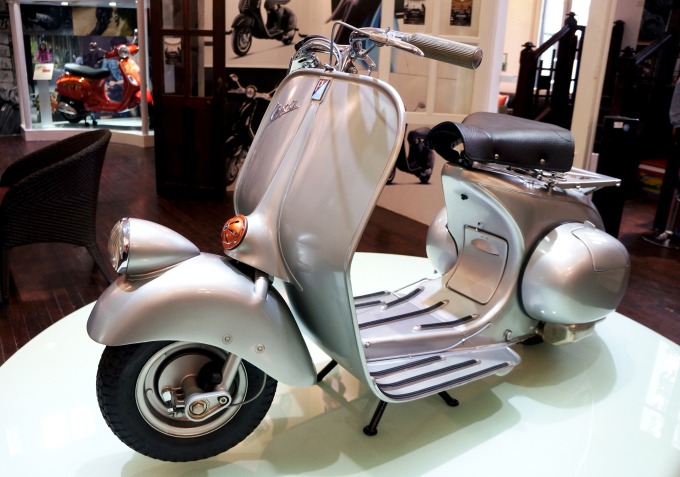
Vespa is the first Vespa in a line of iconic and legendary products. The success of the 98 lies in its low price and fuel economy: about 2 liters per 100 km. The timeless design of one of the most recognizable motorcycles in the world is also a combination of bee shape, practical steering and unique details of the engine, saddle or box. number.
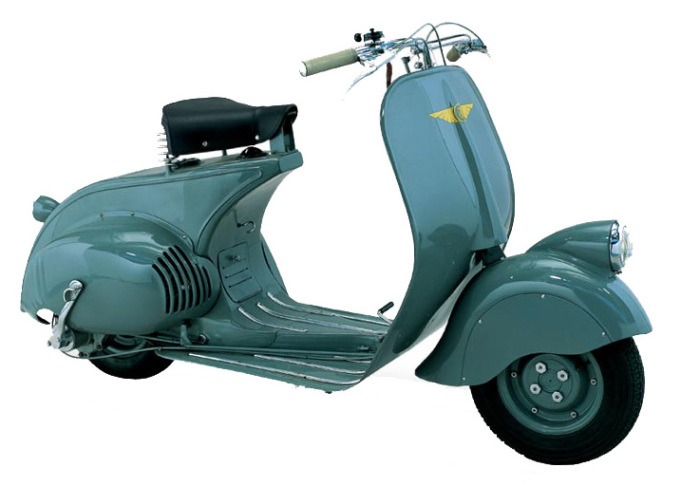
The car uses a 98 cc engine with a capacity of 3.2 horsepower at 4,500 rpm. 2-speed gearbox and manual gearshift. The car did not have a stand and in those days, wherever it went, the Vespa 98 would stand by leaning against walls or trees. When running on the road, the car is often tilted to the right because the engine block is set to the right, the left compartment is empty for storage. 98 can reach a maximum speed of 60 km / h and run long journeys with an average speed of 50 km / h. 98 equipped with an external drive shaft connecting the rear axle and the motor.
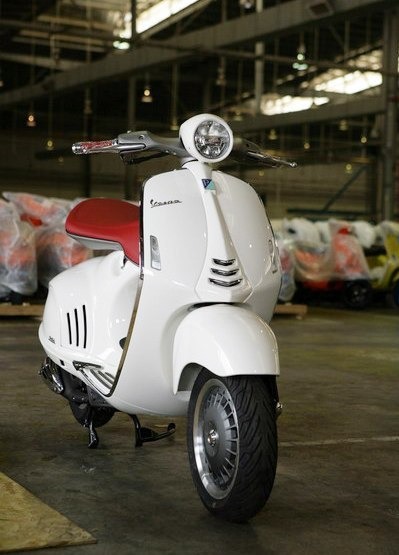
But the starting point of Vespa was not 1946, but 2 years earlier. In 1944, Piaggio engineers Renzo Spolti and Vittorio Casini jointly designed a car with a bodywork that covered the powertrain and provided a somewhat ostentatious protection. In addition, the design also includes a control system located on the handlebars, forced air cooling, small wheels and a rather large saddle height. The official name is MP5 but the prototype car is nicknamed “Paperino”.
But Enrico Piaggio is not satisfied with the MP5, especially with the high sitting position that makes the user often have to stand up to reach his feet to keep his balance. He contracted aeronautical engineer Corradino D’Ascanio to redesign the scooter. D’Ascanio, who had previously been consulted by Ferdinando Innocenti, founder of Innocenti and the father of Lambretta, on the design and manufacture of scooters, immediately understood that Enrico Piaggio hated motorcycles because he believed that he they are massive, dirty, and unreliable.
D’Ascanio’s MP6 prototype car had an engine mounted next to the rear axle. The axle is controlled directly from the transmission, eliminating the drivetrain, oil and other “dirty” stuff that comes with it. The prototype car uses a cylindrical beam chassis with a bearing steel canopy and is no longer completely hidden. These changes allow MP6 to be less difficult than MP5.
The design of the MP6 also includes a single front suspension, interchangeable front and rear wheels and mounted on short axles and a spare wheel. Other features of the MP6 are similar to those of the MP5, such as a steering wheel control system, sealed dual bodywork and high front fenders. The engine is still a 2-stroke single cylinder with a capacity of 98 cc and a maximum speed of 60 km / h.
As soon as he saw the MP6 for the first time, Enrico Piaggio exclaimed: “It looks like a bee!”. And Piaggio always named the new scooter at the suggestion. Vespa is both Latin and Italian for “bee”. In addition, this name refers to the characteristic noise emitted by the scooter’s 2-stroke engine.
In 1946, the first Vespas came out of the factory in Pontedera with the name Vespa 98 and quickly won big. The selling price then started from 55,000 lire. This is also the time marking the birth of revolutionary fashion.
67 years later, Vespa 946 appeared, surprising the whole world. With design inspired by the MP6 combined with innovative innovations and modern technology, the 946 is a product that pays tribute to the first generation of Vespa products with proven values through time.
Vespa 98 Concept – electric car with nostalgic design
Vespa 98 Concept carries on it the nostalgic design of the model born in 1946. Besides, the car uses an electric motor and is equipped with a series of modern features.
For those who love Vespa, the Vespa 98 – the first scooter model produced by Piaggio – always has an irreplaceable place. 70 years after its launch, more than 18 million Vespa 98s have been sold worldwide.

Piaggio Vespa 98 in the picture of two concept cars 1
Inspired by the legendary car launched in 1946, the Mightyseed design team introduced the Vespa 98 electric motorcycle concept. This concept has a retro design and is equipped with many modern technologies.
Piaggio Vespa 98 in the picture of two concept cars 2
The Vespa 98 Concept has an appearance that bears many similarities to the original version. The car has a simplified handlebar, headlights mounted on the front fender, a single seat, cast rims and the familiar “bee gourd” body.
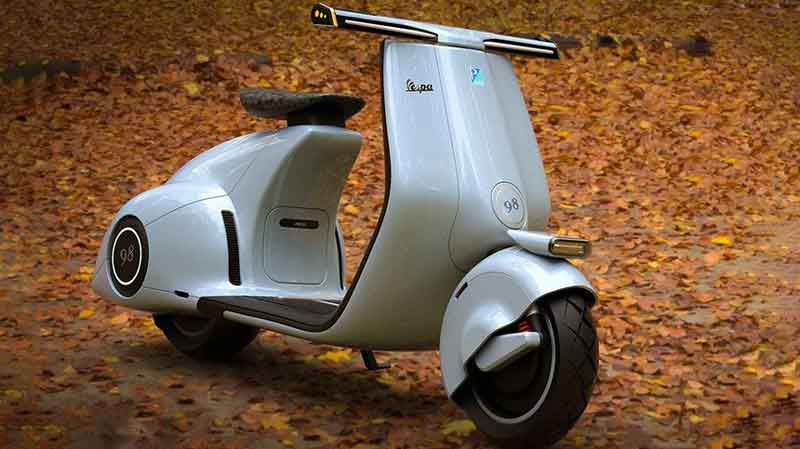
Contrary to the nostalgic appearance, Vespa 98 Concept is equipped with a lot of modern technology. The vehicle uses an electric motor with a 30 Ah lithium-ion battery. As a result, the trunk capacity is significantly improved and the car does not emit emissions into the environment.
Piaggio Vespa 98 in the picture of two concept cars 3
The dashboard on the steering wheel is in the form of a slim LED screen. The concept is equipped with classic ball headlights using LED technology.
Vespa 98 Concept uses advanced LiDAR sensors mounted on both sides of the handle instead of the traditional rearview mirror. With the function of miniature 3D scanners, this system helps the driver easily identify surrounding obstacles such as potholes, oncoming vehicles or pedestrians.
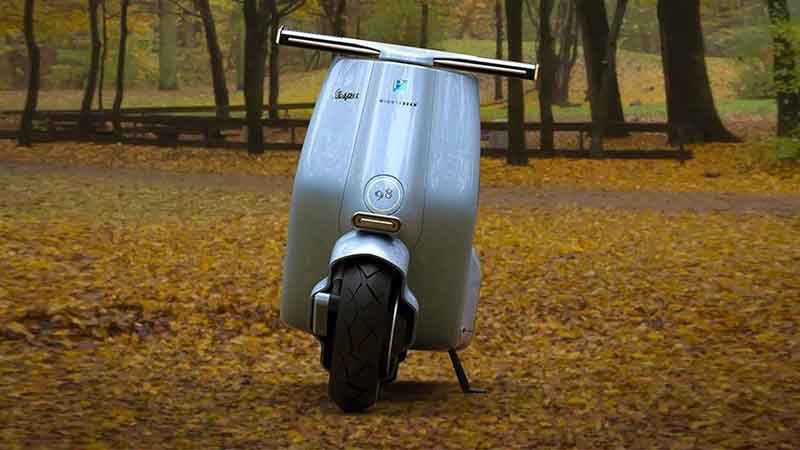
Piaggio Vespa 98 in the picture of two concept cars 4Piaggio Vespa 98 in the picture of two concept cars
The final feature of the Vespa line that appears on the Vespa 98 Concept is the paint color. The car uses Azzurro Pastello blue paint that appeared on a special Vespa PX 125 version – celebrating the 70th anniversary of this legendary model’s birth.
Vespa 98 and its success
When the Vespa 98 was first introduced, it caused a stir in the motorcycle industry. This model not only has a unique design, but also offers outstanding utilities. Vespa 98 is one of the first motorcycle models with a convenient storage box, allowing users to carry goods or personal items.
The power of the Vespa 98 engine was also impressive for that era. With the right power, this model could reach a top speed of about 60 km/h, which was an incredible number at the time. This makes Vespa 98 a fast and convenient means of transport, suitable for traveling in the city.
Vespa 98 quickly attracted attention and favor from customers. This model is not only loved by the Italian people but also spread to other countries around the world. With the success of Vespa 98, the Vespa brand has affirmed its position and become a symbol of Italian style.
Design and outstanding features of Vespa 98
Vespa 98 is a classic scooter line produced by Piaggio from 1946 to 1948. This is Piaggio’s first Vespa model and laid the foundation for the later development and success of the brand. .
Vespa 98 has a simple and sophisticated design, bold Italian and traditional style. The car has a strong chassis and a durable structure. It comes with a front and rear suspension that ensures smooth handling on all kinds of terrain.
A prominent feature of the Vespa 98 is the automatic transmission system, which helps the driver easily control the vehicle. Vespa 98 uses a 2-stroke gasoline engine with a capacity of 98cc, enough to achieve a maximum speed of about 60 km / h.
In terms of design, the Vespa 98 has a slim profile, with an integrated helmet and a spacious seat for the driver and passenger. Besides, it also has a storage compartment in front and behind the saddle, bringing convenience for cargo transportation.
Overall
The Vespa 98 is a unique and iconic model that has contributed to the image and success of the Vespa brand in the field of scooters.
Facebook: https://www.facebook.com/Motobikeinworld
Twiter: https://twitter.com/motoinworld2023
Instagram: https://www.instagram.com/motoinworld/
Pinteres: https://www.pinterest.com/motoinworld/


